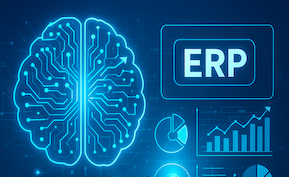Accounting
Artificial Intelligence
AI-Embedded Bookkeeping Tools: Beyond the Basics

AI isn’t just a bolt-on for bookkeeping anymore—it’s increasingly the engine that drives categorization accuracy, faster closes, cleaner reconciliations, and proactive cash planning. Here’s how modern AI-embedded bookkeeping tools go beyond the basics, what to look for, and how to deploy them safely.
What “AI-Embedded” Really Means
AI-embedded bookkeeping tools weave machine learning models directly into day-to-day workflows—posting rules, reconciliations, anomaly checks, and rolling forecasts—rather than treating AI as a separate “assistant.” The result is fewer manual clicks and higher confidence in the ledger, with explanations that link back to source documents and audit trails.
Core Capabilities (and Why They Matter)
1) Transaction Categorization & Coding
Modern tools train on your chart of accounts and historical postings to auto-suggest GL accounts, classes, tax codes, and dimensions. Good systems learn vendor-specific patterns (e.g., “Acme Freight” → Freight-Out, not Office Expense) and adapt when you split or reclassify entries.
- What to expect: 70–95% auto-classification with confidence scores; bulk-approve flows; explain-why notes (“mapped to Travel:Meals due to vendor + memo + prior postings”).
- Signals used: vendor normalization, invoice OCR, memo tokens, amounts, project codes, recurring schedules, and user corrections.
2) Anomaly & Policy Violation Detection
AI flags transactions that deviate from learned patterns or defined policies (e.g., duplicate invoices, weekend posts, off-policy merchants, sudden spend spikes, or out-of-tolerance variances).
- What to expect: ranked alerts with false-positive suppression; side-by-side comparisons to similar transactions; one-click escalation or dismissal to retrain the model.
- Typical rules + ML: amount outliers, vendor changes, duplicate detection (fuzzy match on invoice #/amount/date), and budget variance anomalies.
3) AI-Assisted Bank & Wallet Reconciliations
Matching engines combine deterministic rules (ID/date/amount) with probabilistic models to pair multi-line deposits, FX fees, partial payments, and batched payouts from PSPs.
- What to expect: suggested matches with match-strength scores; automatic creation of balancing entries (e.g., bank fees) with review gates; exception queues for cashiering errors.
- Edge cases handled: timing differences, split payments, multi-currency conversions, chargebacks, and stale outstanding checks.
4) Forecasting & Planning Hooks
Beyond month-end, tools use historical seasonality, pipeline data, and vendor cycles to predict cash inflows/outflows, accruals, and runway.
- What to expect: short-term cash forecasts (2–13 weeks), scenario toggles (hiring freeze, marketing cut, new pricing), and variance analysis that explains misses.
- Data blended: AR aging, billing schedules, payroll calendars, usage metrics, and subscription churn risk.
How These Systems Learn (Without Breaking the Books)
- Human-in-the-loop: Every approve/reclassify action becomes feedback; models should show measurable improvement release-to-release.
- Confidence thresholds: Below a certain score, entries route to review; above it, they can auto-post with audit logs.
- Explainability: Look for feature attributions (“prior 18 similar bills coded to 6040—Freight-Out”) to speed reviewer trust.
Buyer’s Checklist
- Data Connectivity: Native connectors for banks, PSPs, payroll, expense cards, and your GL (e.g., QuickBooks, Xero, NetSuite, Sage). Webhooks or APIs for edge tools.
- Model Quality: Published auto-classification accuracy, precision/recall on duplicates, and reconciliation match rates—by industry or transaction volume bands.
- Controls & Auditability: Role-based approvals, immutable logs, SOC 2/ISO 27001, and exportable evidence for auditors.
- Customization: Support for dimensions (location, class, department), tax regimes, and company-specific policies.
- Performance at Scale: Handles thousands of daily transactions, batched payouts, multi-entity, and multi-currency.
- Forecast Fit: Can import budgets and CRM pipeline; scenario planning with assumptions documented inline.
- Total Cost: Pricing per entity, per user, or per transaction; estimate savings from reduced manual hours and error rates.
Implementation Playbook (Fast, Safe Rollout)
- Scope high-leverage flows first: e.g., bank feed reconciliations and top 20 vendors.
- Backfill training data: Import 6–18 months of coded history for better cold-start accuracy.
- Set guardrails: Define auto-post thresholds, approval chains, and exception SLAs.
- Pilot & calibrate: Run AI suggestions in “review-only” mode for one close cycle; measure precision, time saved, and reclass rate.
- Document policies: Capture mapping rules, variance tolerances, and escalation paths; store in your accounting handbook.
- Expand gradually: Add PSP payouts, expense cards, and forecasting once core GL posting is stable.
Security, Privacy, and Compliance
- Data residency & retention: Clarify where data lives, retention windows, and deletion SLAs.
- PII & financial data handling: Masking at rest, field-level encryption, and least-privilege access.
- Model boundaries: Verify that vendor models don’t train across customers unless data is fully anonymized/aggregated.
- Regulatory posture: Evidence packs for SOC 2 Type II/ISO 27001; for payments, PCI-aware processing.
Where AI Shines (and Where It Doesn’t)
- Great at: High-volume categorization, duplicate detection, multi-line payout matching, and short-term cash projections.
- Still needs humans: Judgment calls on revenue recognition policies, complex accruals/deferrals, unusual contracts, and material audit adjustments.
- Common pitfalls: Over-automation without thresholds, unreviewed auto-posts, ignoring drift when vendors or policies change.
Metrics to Track After Go-Live
- Auto-classification rate and reclass percentage by account.
- Time-to-close and hours saved per close cycle.
- Reconciliation match rate and residual exceptions.
- Alert precision (true positives vs. false positives).
- Forecast accuracy (MAPE for cash in/out at 2, 4, and 8 weeks).
Vendor Landscape (High-Level Patterns)
- SMB-focused GL suites: AI inside standard bookkeeping apps; quick setup, opinionated workflows.
- Mid-market controllers’ tools: Standalone AI layers that sit on top of NetSuite/Sage/Intacct; deeper controls and customization.
- FinOps & spend platforms: Strong on card/expense feeds and anomaly detection; increasingly solid recon automation.
- Specialists: PSP payout reconciliation, marketplace settlements, or industry-specific mappings (e.g., e-commerce, SaaS, logistics).
ROI Snapshot
Teams typically target a 30–60% reduction in manual coding and a 20–40% faster close once auto-post thresholds and review queues are tuned. The soft benefits—fewer surprises, cleaner audit trails, and earlier cash visibility—often justify the investment even when headcount is flat.
Bottom Line
AI-embedded bookkeeping is no longer about flashy assistants—it’s about dependable, auditable automation across categorization, anomaly detection, reconciliations, and forecasting. Choose tools that learn from your data, prove accuracy with metrics, and give you the controls to scale automation without sacrificing trust.






